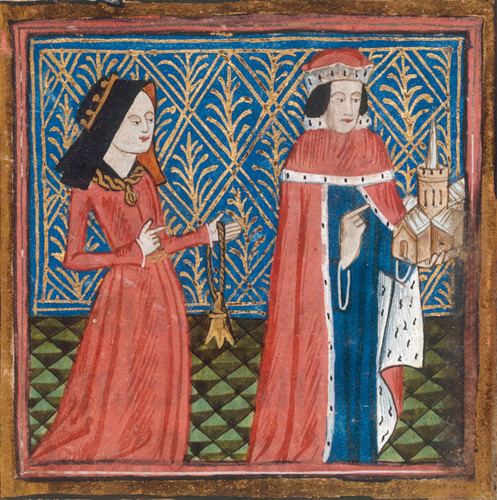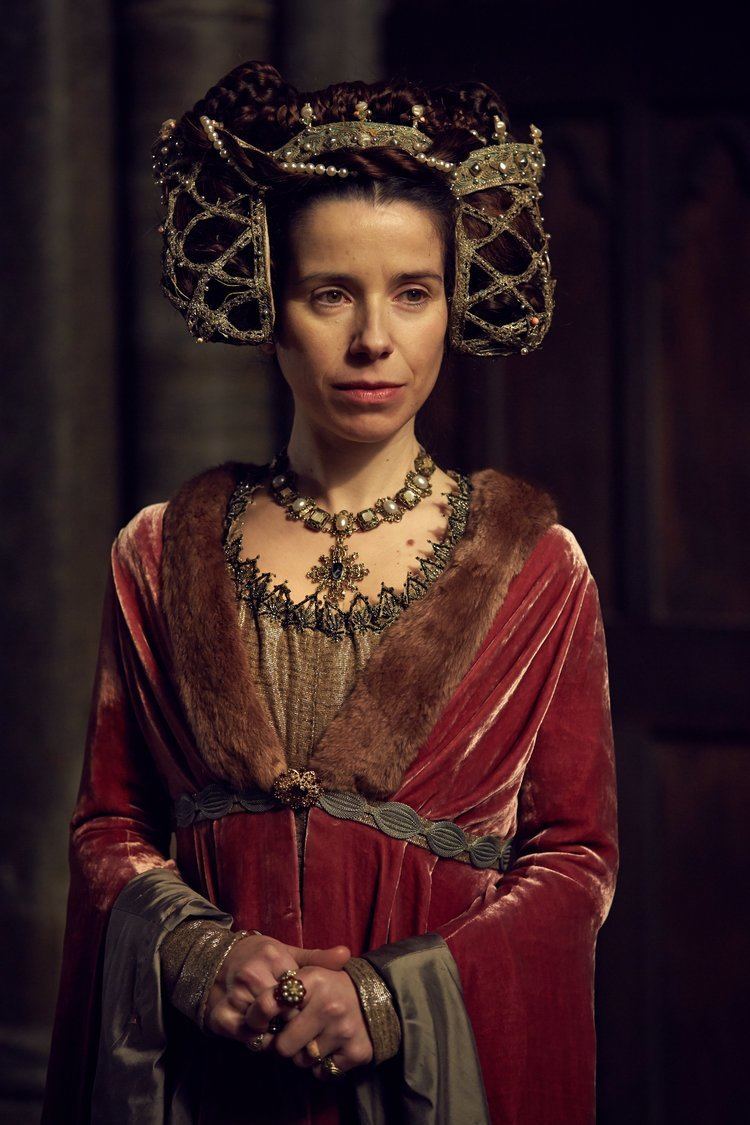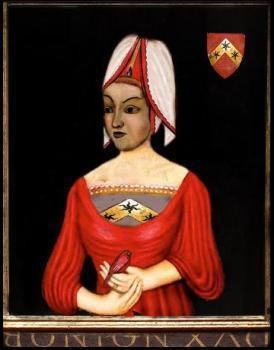Mother Eleanor Culpeper | Name Eleanor, of | |
 | ||
Father Reynold Cobham, 3rd Baron Cobham Died July 7, 1452, Wales, United Kingdom Spouse Humphrey, Duke of Gloucester (m. 1423) Children Antigone Plantagenet, Countess of Tankerville Parents Eleanor Culpeper, Reynold Cobham, 3rd Baron Cobham Grandchildren Elizabeth Grey, Humphrey Grey Similar People Humphrey - Duke of Gloucester, Henry IV of England, Henry V of England | ||
Herb Weidner Lady Eleanor of Gloucester
Eleanor, Duchess of Gloucester (née Cobham; c.1400 – 7 July 1452), was a mistress and the second wife of Humphrey, Duke of Gloucester. A convicted sorceress, her imprisonment for treasonable necromancy in 1441 was a cause célèbre.
Contents
- Herb Weidner Lady Eleanor of Gloucester
- Family
- Mistress and wife to the Duke of Gloucester
- Trial and imprisonment
- Cultural references
- Children
- References

Family

Eleanor was daughter of Reginald Cobham, 3rd Baron Sterborough, 3rd Lord Cobham, and his first wife, Eleanor Culpeper (d. 1422), daughter of Sir Thomas Culpeper, of Rayal.
Mistress and wife to the Duke of Gloucester

In about 1422 Eleanor became a lady-in-waiting to Jacqueline d'Hainault, who, on divorcing John IV, Duke of Brabant, had fled to England in 1421. In 1423, Jacqueline married Humphrey, Duke of Gloucester, the youngest son of King Henry IV, who since the death of his elder brother, King Henry V was Lord Protector of the child king Henry VI and a leading member of his council.
Gloucester went to France to wrest control of his wife's estates in Hainault. On his return to England in 1425 Eleanor became his mistress. In January 1428, the Duke had his marriage to Jacqueline annulled and married Eleanor. According to Harrison "Eleanor was beautiful, intelligent, and ambitious and Humphrey was cultivated, pleasure-loving, and famous" (Harris 2008). Over the next few years they were the centre of a small but flamboyant court based at La Plesaunce in Greenwich, surrounded by poets, musicians, scholars, physicians, friends and acolytes. In November 1435, Gloucester placed his whole estate in a jointure with Eleanor and six months later, in April 1436, she was granted the robes of a duchess for the Garter ceremony.
In 1435, Gloucester's elder brother, John, Duke of Bedford died, making Humphrey heir presumptive to the English throne. Gloucester also claimed the role of regent, hitherto occupied by his brother, but was opposed in that endeavour by the council. His wife Eleanor had some influence at court and seems to have been liked by Henry VI.
Trial and imprisonment
Eleanor consulted astrologers to try to divine the future. The astrologers Thomas Southwell and Roger Bolingbroke predicted that Henry VI would suffer a life-threatening illness in July or August 1441. When rumours of the prediction reached the King's guardians, they also consulted astrologers who could find no such future illness in their astrological predictions, a comfort for the king who had been troubled by the rumours. They also followed the rumours to their source and interrogated Southwell, Bolingbroke and John Home (Eleanor's personal confessor) and then arrested Southwell and Bolingbroke on charges of treasonable necromancy. Bolingbroke named Eleanor as the instigator so she too was arrested and tried. The charges against her were possibly exaggerated to curb the ambitions of her husband.
Eleanor denied most of the charges but confessed to obtaining potions from Margery Jourdemayne, "the Witch of Eye". Her explanation was that they were potions to help her conceive. Eleanor and her fellow conspirators were found guilty. Southwell died in the Tower of London, Bolingbroke was hanged, drawn and quartered, and Jourdemayne was burnt at the stake. Eleanor had to do public penance in London, divorce her husband and was condemned to life imprisonment. In 1442, Eleanor was imprisoned at Chester Castle, then in 1443 moved to Kenilworth Castle. In July 1446 she was moved to the Isle of Man, and finally in March 1449 to Beaumaris Castle in Anglesey, where she died on 7 July 1452.
Cultural references
Eleanor, Duchess of Gloucester appears as a character in William Shakespeare's Henry VI, Part 2. In the play, Shakespeare has King Henry VI banish her to the Isle of Man. She is also a character in Philippa Gregory's 2011 novel about Jacquetta of Luxembourg, The Lady of the Rivers.
Children
Eleanor's husband Humphrey had two known children, Arthur and Antigone. Sources are divided about whether they were born to Eleanor before the marriage, or were the offspring of an "unknown mistress or mistresses". K.H. Vickers, Alison Weir and Cathy Hartley all suggest that Eleanor was their mother, though other authors treat their maternity as unknown.
Thus, Eleanor's children may have been:
